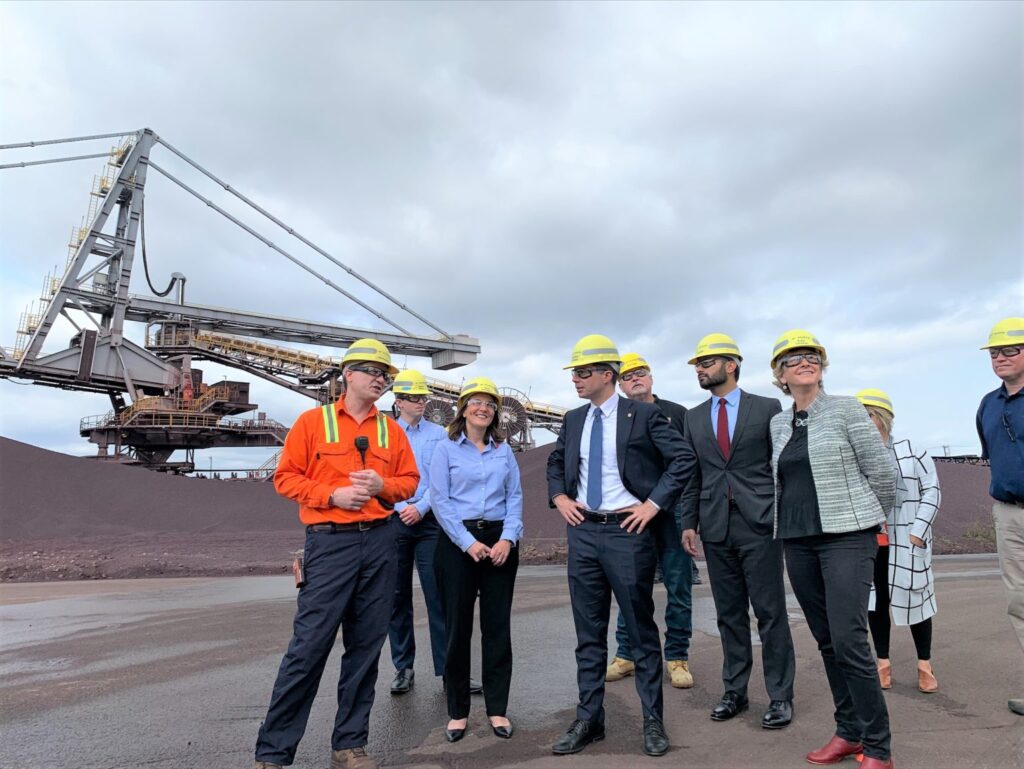
Buy Clean is designed to incentivize cleaner steel production. The pilot requirements issued on Tuesday afternoon are a step forward.
The General Services Administration (GSA) on Tuesday issued new “Buy Clean” pilot guidelines for the procurement of substantially lower embodied carbon construction materials, including steel. These requirements will apply to 11 GSA projects funded by the Inflation Reduction Act (IRA) and valued at more than $300 million.
Confused by what “lower embodied carbon construction materials” means? Don’t know exactly what “Buy Clean” even is? Let’s break it down.
Why This is Happening: In short, climate change. The United States is working to lower its greenhouse gas emissions to meet goals agreed to in the Paris Agreement, and reducing industrial emissions is a critical part of this effort. Buy Clean is designed to incentivize industry to lower their carbon output by ensuring that when the government spends taxpayer money on infrastructure, it purchases low emission products.
That Sounds Familiar: It’s the same sort of strategy as Buy America, in that it involves using government funds to incentivize behavior and reward those who are doing the right thing. And for this to work, Buy America and Buy Clean must work together — taxpayer money needs to incentivize U.S. production of lower emission steel. Without Buy America applied, countries like China would be better able to use unfair trade practices to undermine American companies and workers, and Buy Clean may end up leading to taxpayer-funded purchases of imports from countries that are far more polluting. That would be what the kids like to call a “self own.”
The Good News Is: American steelmakers already are working hard to cut their greenhouse gas output, so finding lower emission Made in USA steel is very doable. Of the seven largest steel-producing countries, the U.S. has the lowest CO₂ emissions per ton of steel produced and lowest energy use. U.S. Steel, for example, has set a 2050 goal of achieving net zero greenhouse gas emissions. Cleveland-Cliffs, meanwhile, set a 2030 goal of reducing its emissions by 25%.
Diving Into the Details: One big thing that GSA did right is pursue a bifurcated approach to Buy Clean, meaning it will include both integrated and electric arc furnace steel production. The American steel sector consists of electric arc furnaces (EAFs) and integrated mills that use basic oxygen furnaces (BOF). Integrated (BOF) producers create steel from iron and alloying elements while EAFs manufacture steel from post-consumer steel waste (a.k.a. steel scrap). The United States needs both types of steel production to meet its national and economic security needs. There is not enough existing steel waste to rely solely on EAFs for America’s needs, and BOFs make certain types of steel that EAFs can’t produce. Plus, BOFs employ a whole lot of union workers throughout the production process.
What Does Scott Paul Say? The Alliance for American Manufacturing President had a great deal of thoughts on GSA’s announcement. But overall, he noted that “GSA got the first of many key details correct” and said moving forward it is critical “that “Buy Clean builds upon existing Buy America policies, accurately accounts for emissions throughout the supply chain, and relies on trusted verification tools.”
